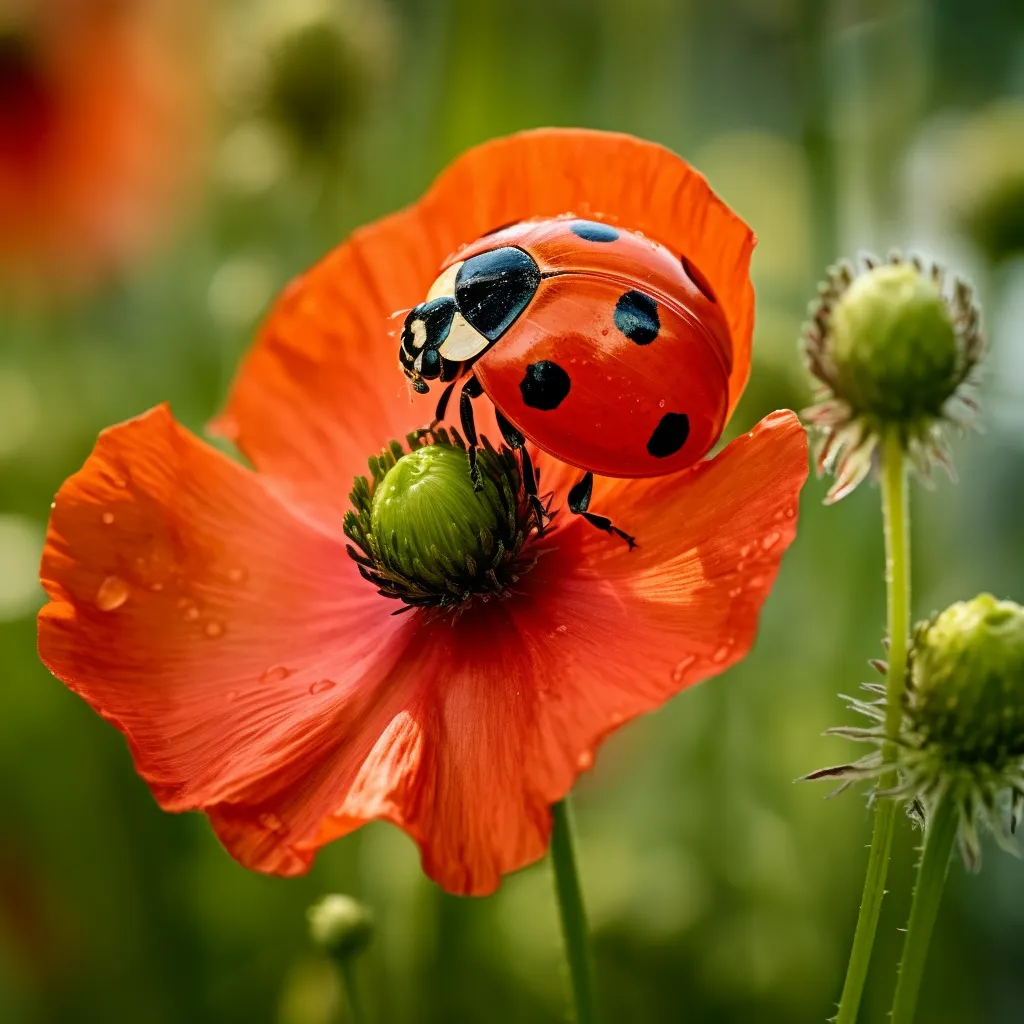Story of Day :
Contents
Papaver commutatum Ladybird (Poppy Ladybird) Plant Care Tips
Are you looking to add a touch of vibrant red to your garden? Look no further than the Papaver commutatum, commonly known as Ladybird Poppy.
This stunning annual plant is not only visually appealing but also easy to care for.
In this article, we will provide you with some essential tips on how to care for your Papaver commutatum Ladybird plant.
Planting
Before planting your Ladybird Poppy seeds, it’s important to choose the right location.
These plants thrive in full sun and well-drained soil.
Ensure that the area receives at least six hours of sunlight each day.
- Choose a spot in your garden where the soil is loose and fertile.
- Sow the seeds directly into the ground after all risk of frost has passed.
- Gently press down on the soil after sowing but avoid burying the seeds too deep, as they need light to germinate.
Watering

Papaver commutatum plants have moderate water needs.
While they can tolerate dry conditions once established, it’s crucial to keep them adequately hydrated during their initial growth stages.
- Water your Ladybird Poppies regularly until they are established.
- Avoid overwatering, as excessive moisture can lead to root rot and other fungal diseases.
- Allow the top inch of soil to dry out between waterings before watering again.
Fertilizing
To ensure healthy growth and abundant blooms, fertilize your Papaver commutatum plants regularly throughout their growing season.
- Apply a balanced, slow-release fertilizer to the soil before planting.
- Top-dress the plants with compost or well-rotted manure in early spring.
- Avoid over-fertilizing, as this can lead to excessive foliage growth with fewer flowers.
Pruning

Pruning is not typically necessary for Papaver commutatum Ladybird plants.
However, removing spent flowers can encourage additional blooms and prevent self-seeding in your garden.
- Deadhead your Ladybird Poppies regularly by removing faded flowers at their base.
- This will redirect the plant’s energy towards producing new blooms instead of setting seeds.
Pest and Disease Control
Ladybird Poppy plants are relatively resistant to pests and diseases.
However, it’s essential to keep an eye out for common issues that may arise:
- Pests:

Use insecticidal soap or a strong blast of water to remove them from the leaves.
Encouraging natural predators like ladybugs can also help control aphid populations.
Handpick them off or use organic insecticides if infestation persists.
- Diseases:
Ensure proper drainage and provide adequate airflow around your plants.
Tips for Continuous Blooming

If you want your Ladybird Poppy plants to bloom continuously throughout the season, follow these additional tips:
- Sow new seeds every few weeks to ensure a constant supply of fresh blooms.
- Remove any faded or wilted flowers promptly to encourage new bud formation.
- Apply a liquid flower fertilizer once a month during the growing season to promote healthy growth and blooming.
Conclusion
Papaver commutatum Ladybird (Poppy Ladybird) plants are an excellent choice for adding vibrant color to your garden.
With their easy care requirements and stunning red flowers, they are sure to be a showstopper.
Remember to choose a sunny location, provide adequate watering without overdoing it, fertilize regularly, and remove spent flowers for continuous blooms.
By following these simple tips, you can enjoy the beauty of Ladybird Poppies in your garden all summer long!